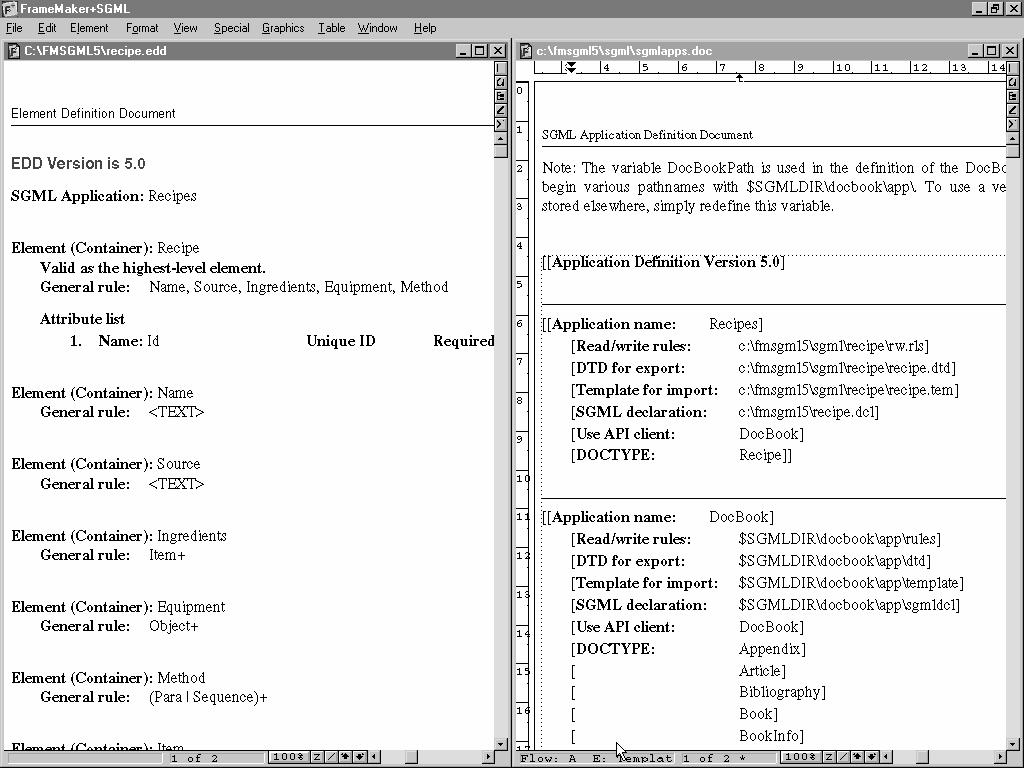FrameMaker+SGML ✗
FrameMaker was another long-time standard for publishing, and had the ability to work with SGML documents since Adobe took it over in the mid 1990s, when it was aimed at the industrial structured-document formatting market. As with other editors, the DTD has to be compiled, in this case to an EDD file, and then a stylesheet created, before any editing or formatting can take place. The early interface for this was forbiddingly complex (see Figure 15, “FrameMaker+SGML creating styles for a newly-compiled DTD”).
Figure 15. FrameMaker+SGML creating styles for a newly-compiled DTD

While the system was popular with typesetters, its use with SGML was troublesome for many, with tweaks and adjustments required, and concerns about the way in which SGML was exported, especially as its own (MIF) compatibility export format was very successful. Like ADEPT, it had the ability to apply non-structural tweaks after formatting, before pre-press, to adjust visual details not provided for in the code.